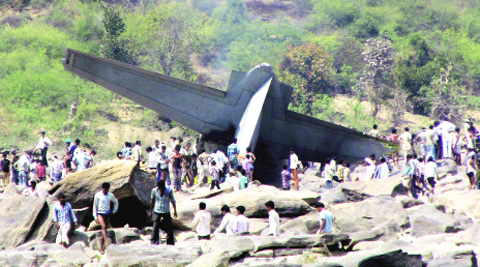MUMBAI: The gas leak on board the Kolkata Class missile destroyer occurred during testing for "peculiar problems" the warship was facing — all major components are functioning well separately, but start misbehaving when put in tandem — sources said. This accident, alongside the INS Sindhuratna fire last week and the INS Sindhurakshak blasts in 2013, happened during trial runs.
The commissioning of the ship, scheduled this year, may now be delayed.
"The warship's engine, the gear box and the shaft, all are doing well separately but the ship starts making a noise when all these function simultaneously. A thorough check of the entire machinery to correct the technical snag was on when the incident occurred," the source added.
The carbon dioxide leak killed Commander Kuntal Wadhwa, 42, who was inspecting the warship's engine room on Friday afternoon. An engineering officer, Wadhwa had topped in his batch. He is survived by his wife, a 12-year-old son and eight-year-old daughter. He served the Indian Navy for more than over 18 years. His parents reside in New Delhi.
"The officer's body was taken to JJ Hospital for autopsy and forensic tests before it is handed over to the family members who will arrive from New Delhi," said an official.
Two MDL personnel present near the warship were also taken to hospital for check-up after they complained of suffocation. They were discharged after being provided with medical assistance.
Yard-701 belongs to a class of stealth guided-missile destroyers constructed for Indian Navy. The class comprises three ships—Kolkata, Kochi and Chennai—all of which are being built by MDL. The most modern destroyer in the country, it is to be commissioned in a few weeks. It is currently at MbPT, undergoing trials.
Representatives from Mazgaon Dock Ltd (MDL) will also be associated with the inquiry set up by the Navy. The department of defence production, ministry of defence, has also asked for a detailed report from MDL. An MDL spokesperson said, "The incident would not affect the warship's commissioning scheduled in the next few weeks. There is no physical damage onboard. There was a gas leak. The ship will be commissioned on time."
At the time of the incident, the ship was at MbPT undergoing machinery trials. "The officer who died was the designated officer of the yet-to-be commissioned warship. He was present during trials along with more than 40 Indian Navy personnel when the incident occurred," the spokesperson said.
Due to delays in their construction and a problem found during sea trials, the initial commissioning date of the first ship of the class was pushed back from 2010 to 2014.
The tragedy has taken place 10 days after fire broke out onboard submarine INS Sindhuratna on February 26 morning, killing two officers—Lieutenant Commander Kapish Muwal and Lieutenant Manoranjan Kumar—and injuring several due to suffocation.
On August 14 last year, three officers killed and 15 crews injured in submarine INS Sindhurakshak. In all the three incidents, the warships malfunctioned during trial runs.






